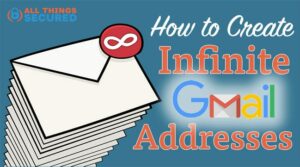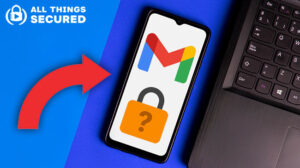It is estimated that over 347 BILLION emails are sent every day and Gmail owns 35% of the market. It’s an understatement to say that email security is more important than ever! Our personal and professional lives rely heavily on email communication, making it imperative that we protect our data from potential threats. In this article, I’m going to explain what kind of security Gmail uses, evaluate their security and privacy measures, and help you answer the simple question “Is Gmail secure?”.
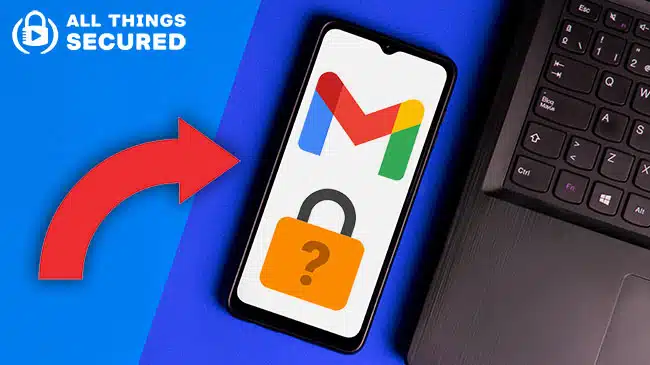
Key Takeaways
- Gmail offers numerous security features, including AI-powered phishing protection and “Confidential Mode”, but they do NOT provide end-to-end encryption.
- Every Gmail account needs to have a strong, unique password backed up by some form two-factor authentication (2FA).
- There are alternatives to Gmail such as Proton Mail or Tuta that offer enhanced encryption and increased privacy.
If you have a Gmail account, don’t worry – I’m not here to try to convince you to delete it. My goal is to help you understand exactly what kind of security you’re getting and whether or not it’s enough for you.
Use the following table of content links to jump to a specific section:
Understanding Gmail’s Security Features
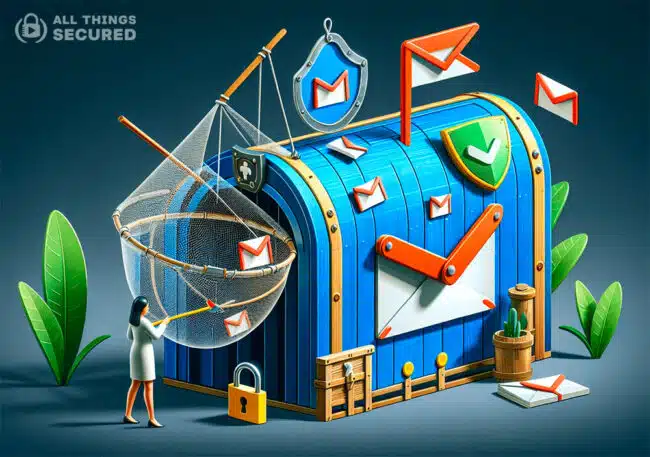
Gmail provides a host of security features designed to protect users from various online threats. These include:
- Phishing Protection
- Confidential Mode
- Two-Factor Authentication (2FA)
- Google’s Advanced Protection Program
Although these features definitely enhance Gmail’s overall security, the service lacks end-to-end encryption, a benchmark in email security. We’ll go into more detail about what this means in a moment, but first let’s take a look at each of these security features individually.
Phishing Protection (AI-powered)
One of Gmail’s most valuable security features is also one you’re not likely to notice because it all happens behind the scenes: phishing protection. By utilizing AI-powered defenses, Gmail analyzes emails for malicious content and links, effectively blocking more than 99.9% of spam, phishing, and malware.
Most users never see these emails since they bypass the inbox and are automatically sent to the spam folder. Google’s ability to detect and remove these kinds of scams is what makes Gmail better than other options like Outlook, Yahoo Mail and others.
There’s no setting you need to turn on for phishing protection. Gmail automatically employs this security feature on every account in order to increase your Gmail account’s security.
Confidential Mode
A lesser-known security feature provided by Gmail is what is known as Confidential Mode. This feature enables users to send sensitive information with added security measures, such as message expiration dates and passcodes. Recipients will also have certain options disabled, like copying, printing, forwarding, and downloading the email (although recipients can theoretically still screen capture the contents of the message).
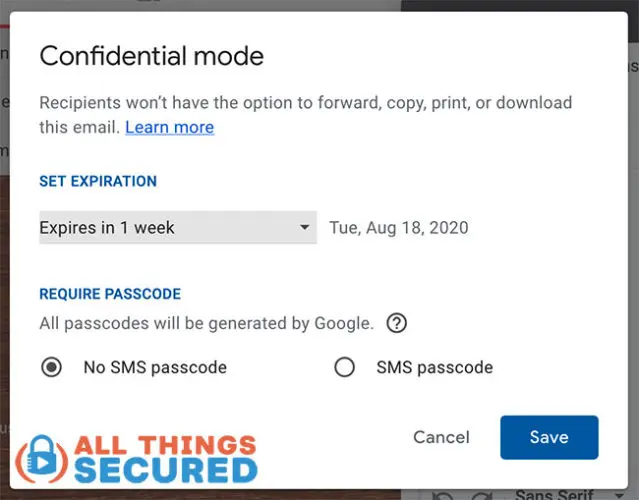
Confidential Mode is a feature meant to ensure that only the intended recipient can access the sensitive information, providing an extra layer of protection for your Gmail account.
Two-Factor Authentication (2FA)
Two-factor authentication (aka 2FA) is a security measure that adds an additional layer of protection to any online account you use. There are three primary kinds of 2FA that can be used with Gmail and other accounts:
- SMS Text: Receive a 6-digit code texted to your phone number. This is the least secure form of 2FA since there are ways to hack your phone SIM card.
- Authenticator App: An app on your phone (such as Google Authenticator), provides a 6-digit code that changes every 30 seconds. This code is used to verify access to your Gmail account.
- Security Key: A physical key (i.e. a card or a USB key) that must be physically present when logging into your account.
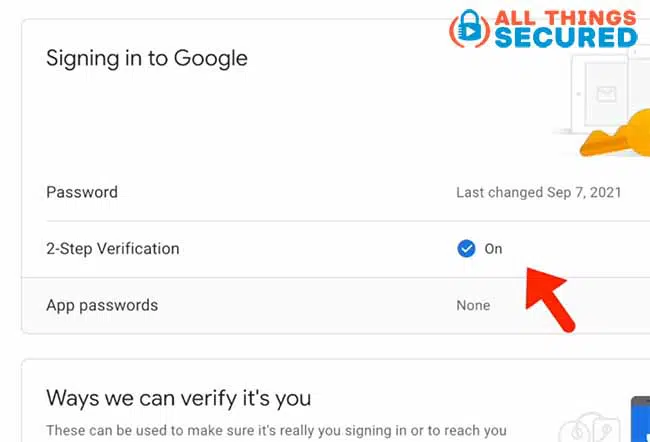
Users are required to set up their own 2-step verification within their Google account, and it is highly recommended that you do so.
Enabling two-factor authentication can make a significant difference in the security of your account, as Google claims that this feature has decreased compromised accounts by 50%.
Google’s Advanced Protection Program
Finally, for high-risk users such as journalists and activists, Google offers their Advanced Protection Program, which provides enhanced security measures. Enabling this setting means:
- You will be required to set up a physical security key (we recommend the Yubikey)
- Your Google account will restrict access to third-party apps
- Google will more strictly defend against fraudulent access to your account.
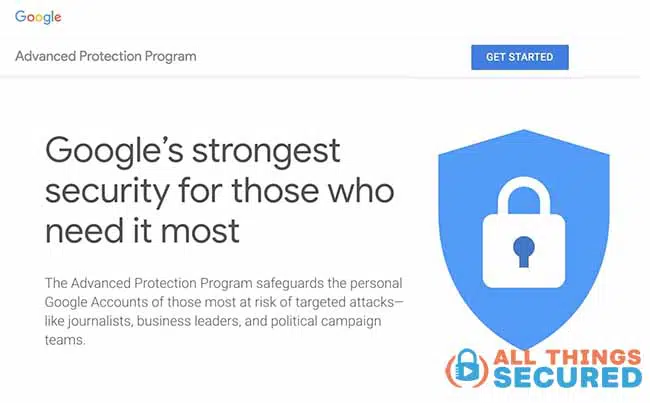
Google’s Advanced Protection Program is open to anybody who wants the added protection, so you can get started here.
Analyzing Gmail Encryption Standards
There are two different types of encryption standards that you’ll find with Gmail:
- TLS (Transport Layer Security): an encryption protocol for secure data transmission, which is standard with most email providers. It is not, however, the same as end-to-end encryption, which is an encryption measure that ensures only the sender and recipient can access the content of an email.
- S/MIME: available for paid Google Workspace users, offering better protection, but it is not available for free Gmail accounts.
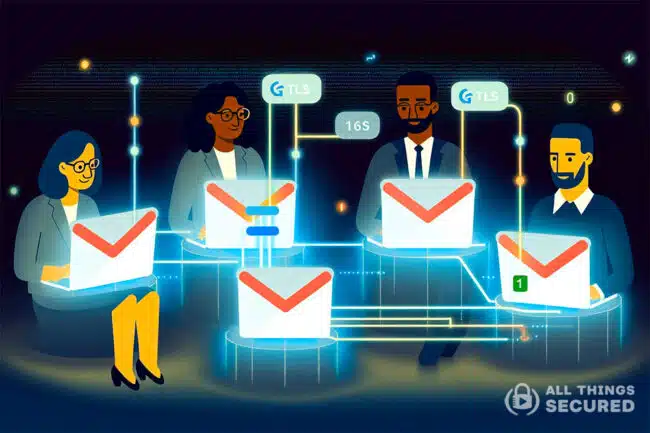
S/MIME encryption is So, how secure is Gmail? While it provides a good level of security, there are more robust options available for those who require maximum protection.
Let’s examine the differences between these encryption standards.
TLS Encryption
TLS encryption secures data during transmission between the sender and recipient email systems, ensuring that the content of email communication is encrypted and protected from unauthorized access or modification while in transit. However, TLS encryption does not protect data while it is at rest on servers, leaving it vulnerable to potential breaches.
This limitation underscores the significance of end-to-end encryption for superior email security.
S/MIME Encryption
S/MIME encryption offers an additional layer of security for Google Workspace users, encrypting emails both in transit and at rest. This encryption method ensures that only the intended recipient can access the email content, as it requires the recipient’s private key to decrypt the message.
S/MIME encryption offers improved security compared to TLS encryption, but it is exclusive to paid Google Workspace users.
The Importance of End-to-End Encryption
End-to-end encryption is the gold standard for email security, as it guarantees that only the sender and the intended recipient can access the content of an email. This encryption method ensures that the data remains secure even if it is intercepted during transmission, protecting sensitive information from unauthorized access.
Despite its advantages, Gmail does not offer end-to-end encryption, which is one of the primary reasons why some individuals and business decide to run their email through a more security-focused email provider.
Benefits of End-to-End Encryption
End-to-end encryption offers numerous benefits for email security, including protection from unauthorized access, data breaches, and surveillance. By encrypting data on the sender’s device and only decrypting it on the recipient’s device, end-to-end encryption ensures that no one else, including the email provider, can read or access the content.
For users who prioritize maximum email security, end-to-end encryption is an indispensable feature.
Gmail’s Lack of End-to-End Encryption
Despite its many security features, Gmail does not offer end-to-end encryption, leaving users’ emails potentially vulnerable to interception and unauthorized access. This raises concerns about the privacy and security of user data, as well as the potential misuse of personal information by third parties.
Users who prioritize enhanced privacy and protection might find email providers focusing on privacy and offering end-to-end encryption a superior alternative.
How to Strengthen Your Gmail Account Security
Even without end-to-end encryption, there are a few simple steps you can take today that will improve your Gmail account’s overall security.
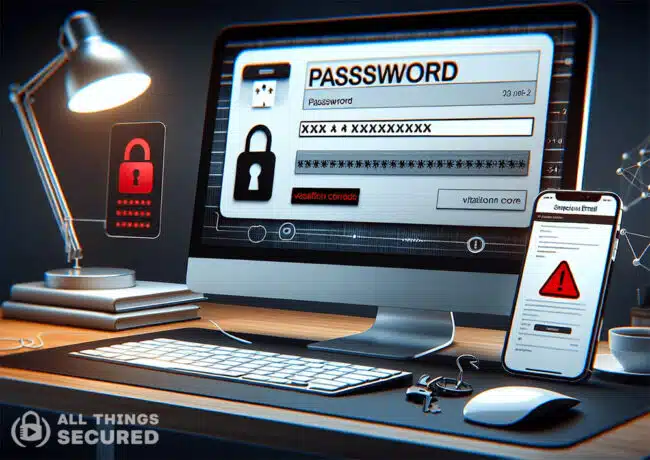
Take a moment to walk through this simple checklist and make sure you’re following each step, which includes:
Adhering to these best practices and integrating them into your Gmail security measures can greatly mitigate the risk of unauthorized access and safeguard your sensitive data.
Creating Strong Passwords
Creating robust, distinctive passwords is a key step in securing your Gmail account. A secure password should:
- Be at least 12 characters long;
- Include a mix of uppercase and lowercase letters, numbers, and special symbols
- Avoid obvious information like your name or birthdate
Using a good password manager can help you manage and generate strong passwords for all your accounts, reducing the risk of unauthorized access due to weak or reused passwords.
Enabling Two-Step Verification
Enabling two-step verification in Gmail adds an extra layer of security by requiring a unique code or security key, in addition to your password, when signing in. This feature helps protect your account even if someone obtains your password, making it more difficult for unauthorized users to gain access.
Two-step verification, which is easy to implement, offers an effective barrier against phishing attempts and other threats to your Gmail account’s security.
S.T.O.P.! Recognize and Avoid Phishing Attempts
Phishing attempts are designed to deceive you into providing sensitive information or clicking malicious links. Recognizing the telltale signs of phishing emails can help you avoid falling victim to scams.
One of the best ways to protect yourself is to learn the S.T.O.P. method:
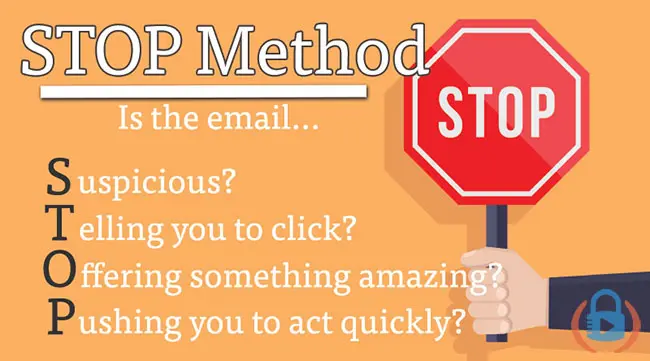
If the email message or sender looks suspicious, if they’re asking you to click something, offering something amazing or pushing you to act quickly, just STOP! Taking a moment to step away and think clearly can mean the difference between being phished or not.
By maintaining alertness and scrutinizing any suspicious emails, you can shield your Gmail account and sensitive data from phishing attacks.
Gmail Privacy Concerns
That’s “Concerns” with a capital “C.” Have you ever wondered why Gmail is free?
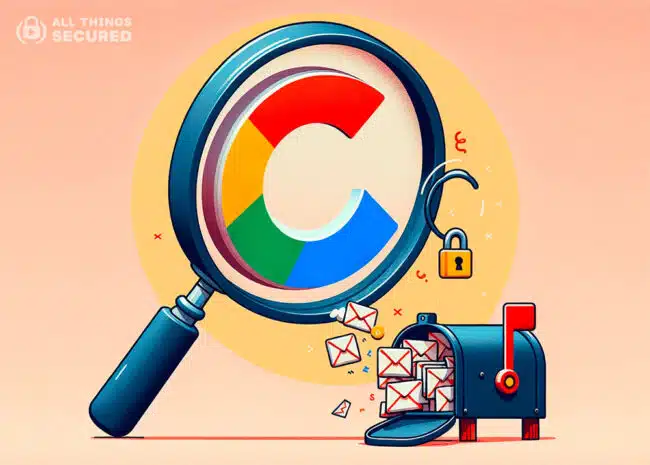
Privacy concerns related to Gmail stem from Google’s data collection practices and the lack of end-to-end encryption. Google collects a wide range of user data from Gmail, including email content, attachments, and metadata, which can be used for targeted advertising and other purposes.
Google insists that they don’t misuse this kind of data, but it nevertheless raises concerns for many users.
These concerns have led some users to seek privacy-focused email providers that offer greater protection and control over their personal information.
Google’s Data Collection
Google collects various types of data from Gmail users, such as email content, attachments, and metadata, to personalize ads and optimize their Google services. While Google no longer scans Gmail messages for targeted advertising, the company still collects and uses data from other sources, such as search histories and YouTube browsing, raising concerns about Gmail’s privacy and the potential misuse of personal information.
The Alternative…Isn’t Free
The problem is that if you want to avoid this kind of data collection and profiling, you’re going to have to consider doing something that you’ve never had to do before: pay for email.
Google and other big tech companies have conditioned us to believe that these kind of internet services are absolutely free, but that’s not true. We’ve given up much of our data and privacy in exchange for our use of Gmail.
For users seeking enhanced privacy and protection, it’s worth considering privacy-focused email providers that offer a secure alternative to the Gmail app, ensuring a Gmail secure experience.
More Secure Alternatives to Gmail
For users seeking greater privacy and protection, there are more secure alternatives to Gmail. There are quite a few, in fact, but we’re just going to focus on two of them here: Proton Mail and Tuta. Each of these services provide not only the email product that Google offers, but also the ancillary services such as private calendar and secure cloud storage.
These email providers prioritize user privacy and offer advanced security features, including end-to-end encryption, to ensure the confidentiality of your communications. Choosing a privacy-focused email provider ensures protection of your sensitive information, providing you peace of mind.
Proton Mail (Recommended)
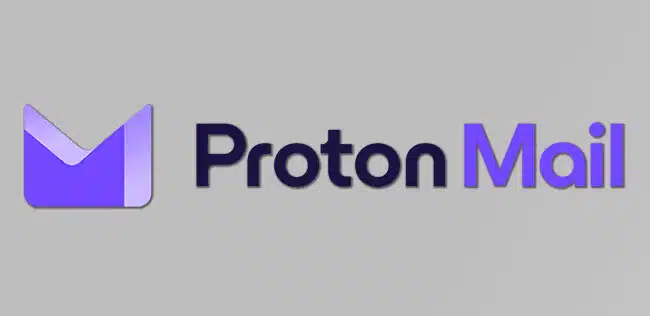
Proton Mail is a privacy-focused email provider that offers the following features:
- End-to-end encryption (not even Proton can read your emails even if the government asked them to)
- Sentinel, an advanced security program
- User-friendly interface: it feels exactly like Gmail!
- Free & Paid plans
With Proton Mail, you can ensure that your messages and attachments remain secure from unauthorized access and the migration process from Gmail to Proton Mail is made extremely fast and easy.
I use and recommend Proton Mail to anybody who is wanting to make that switch away from Google Mail.
Tuta | Privacy-First Email
Tuta is another secure email provider that prioritizes privacy and confidentiality. With end-to-end encryption and a user-friendly interface, Tuta offers a secure and streamlined email experience.
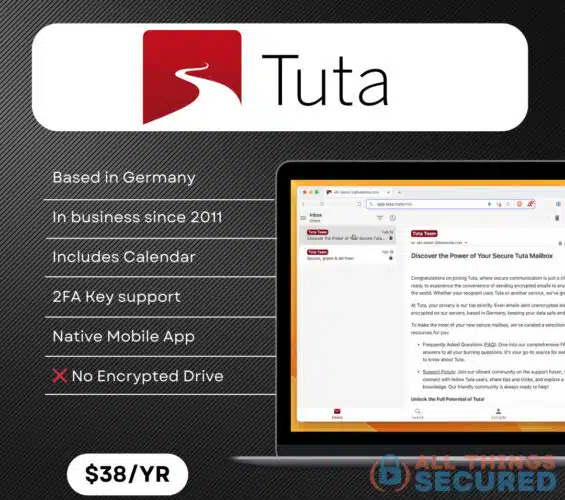
As with Proton Mail, Tuta also comes with a native mobile app and includes a calendar. With its focus on privacy, Tuta is an excellent Gmail alternative for users seeking to shield their sensitive information and communications from potential threats.
Summary
In conclusion, Gmail offers a range of security features that help protect user data from various threats and there are steps you can take as a user to add even greater security.
However, the lack of end-to-end encryption and Google’s data collection practices raise important privacy concerns. By implementing best practices for Gmail security and considering privacy-focused email providers like Proton Mail and Tuta, you can ensure the confidentiality and security of your email communications.
Frequently Asked Questions
No. While Gmail offers some standard security features such as phishing protection, TLS encryption, and 128-bit encryption, it is not end-to-end encrypted and thus shouldn’t be trusted as completely secure when sending sensitive information.
No. While Gmail does offer some degree of safety for the average internet user, you are still receiving a free service from Google in exchange for data collection. If you are looking for better encryption and privacy with email, there are other options such as Proton Mail that are much better.
Gmail’s phishing protection is considered to be highly secure, successfully blocking more than 99.9% of malicious emails.
No, Gmail does not offer end-to-end encryption, which is the highest standard for email security.
Google’s Advanced Protection Program forces the use of physical security keys, protection against malicious attachments and scripts, and identification of suspicious links and external images for ultimate user security.
